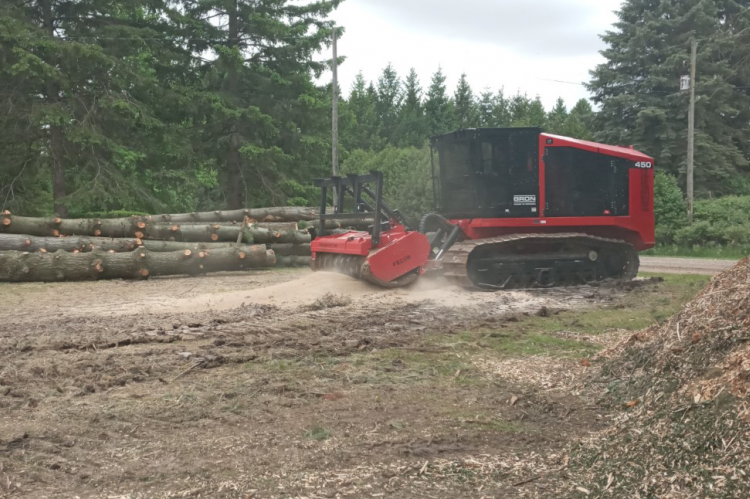UNDERSTANDING THE ROLE OF A FORESTRY MULCHER
Forestry mulchers are predominantly employed for the maintenance and cleansing of forests and other green spaces. Their tasks entail the elimination of shrubs, bushes, and branches, and the pruning of trees. Additionally, these apparatuses aid in soil preparation for seeding and tree planting, trail formation, fire-affected area clearance, and the formation of fire breaks. Owing to their wide-ranging applications and compatibility with an array of operating machines, forestry mulchers are particularly useful in the management and maintenance of vegetation.
When it comes to forestland clearance, options like manual labor, bulldozers, excavators, and burning are available. However, forestry mulching is often the preferred option for two key reasons:
Forestry mulching offers swift and economical outcomes. Forestry mulching aids in environmental preservation. Forestry mulchers have the ability to streamline operations, saving both time and money. They are adept at both clearing and disposing of forestland simultaneously, reducing the need for extra equipment or personnel to cut, collect, and remove debris.
Furthermore, forestry mulching not only clears vegetation but also reintroduces it back into the ecosystem in a processed form. This leads to an even distribution of biomass across the soil, protecting it from drying out post-vegetation removal and shielding it from wind and rain erosion. The mulching process also encourages the creation of a nutrient-dense humus layer, boosting soil fertility over time.
BRON Forestry Mulchers are engineered for optimal durability and maximum efficiency, serving as an indispensable resource for both the environment and our customers. They are recognized by various names such as brush cutters, cutter heads, and mulching heads.
Our forestry mulchers are proudly Canadian-made, ensuring a long service life, superior efficiency, and top-of-the-line crushing capacity.
USES OF FORESTRY MULCHERS • Land Clearing: Useful for clearing sites for secondary vegetation and construction, including projects such as wind farms, parks, roads, and golf courses.
• Infrastructure Measures: Helps in preparing land for infrastructure projects via complete or selective clearing.
• Extraction and Access Routes: Aids in creating and maintaining unpaved roads for sustainable access to forest stands and transportation of harvested timber.
• Forestry: Offers robust, resilient, and efficient tools for the forestry industry to extract timber from harvested areas.
• Stump Grinding: Used for on-site stump milling, tree stump shredding, and root stock recycling. • Removal of Beetle-Infested Wood: Allows quick removal of infested trees to avert further spread and damage.
• Wildfire Prevention: Used for clearing surface vegetation to diminish fire risk and control spread. • Reclamation and Recultivation: Useful in land utilization for commercial purposes like agriculture and plantations, which involves soil preparation.
• Plantation Agriculture: Serves a variety of plantation needs, from forestry plantations like eucalyptus and pines to fruit plantations like pineapples, bananas, and apples.
• Special Applications: Includes tasks such as seismic lines, natural availability, landscape and habitat maintenance, embankment maintenance, re-naturalization, and composting.
• Right-of-Way Maintenance: Ensures clear paths for electricity and overhead cables, underground cables, pipelines, and railway lines.
- Log in to post comments

